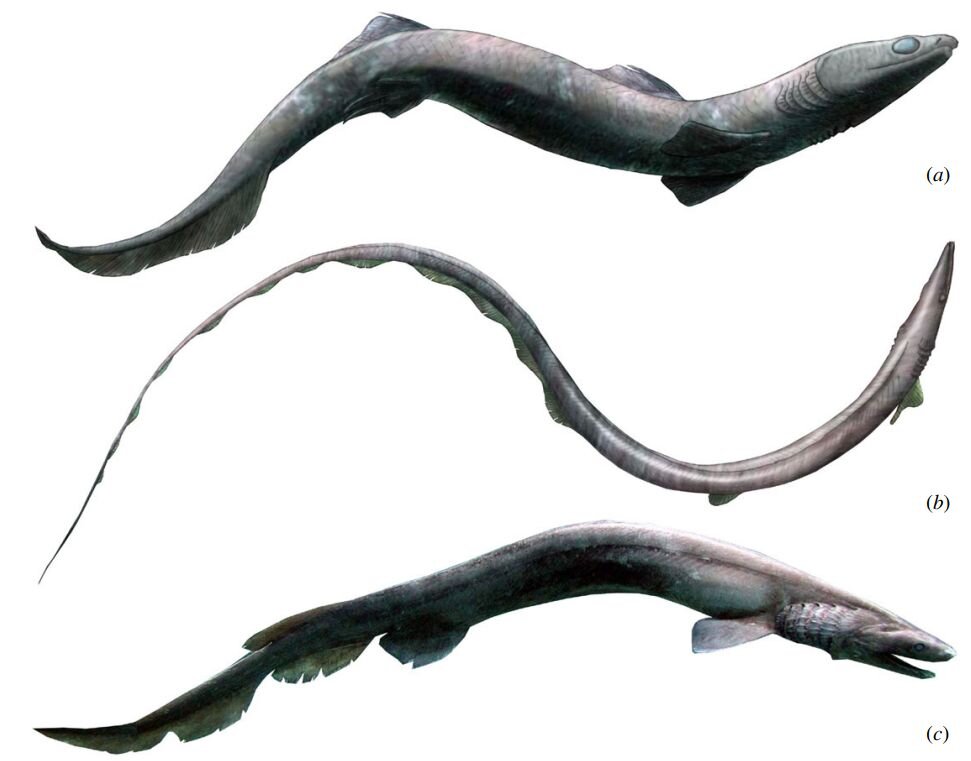by Bob Yirka , Phys.org
An international team of researchers has found the first skeletal remains of Phoebodus—an ancient shark—in the Anti-Atlas Mountains in Morocco. In their paper published in Proceedings of the Royal Society B, the group describes the fossil and compares it to a modern shark and fish.
Ancient sharks that are long extinct left behind a lot of teeth—but very little other evidence of their existence. This is because their skeletons were made of soft cartilage instead of hard bone. Because of that, rare fossilized skeletons generate much excitement in the archeology community. In this new effort, the researchers report that they found a complete fossilized skeleton of Phoebodus, a shark that lived over 350 million years ago.
The shark fossil was found in a mountainous region of Morocco that had once been a shallow sea basin. The researchers also found several skulls and parts of another species of Phoebodus at the same site. Testing of the material in which the shark remains were fossilized revealed that the specimens were approximately 370 million years old. Prior to the find, the only evidence of Phoebodus was three teeth. The researchers note that Phoebodus went extinct in an early part of the Carboniferous—a very long time before many of its features evolved in other modern sea creatures.
In studying the fossilized skeleton, the researchers were able to see that when alive, the shark had a long, thin body (almost like an eel), a flat skull and a long jaw. They noted that it bore a striking resemblance to the modern frilled shark, though the two are not related. The teeth, in particular, were very similar—round and pointy and inward-turning, rather than the more familiar serrated edges. Such sharks tend to grab prey and hold on to it like a bulldog and then swallow it whole. The researchers suggest the resemblance between the ancient shark and the modern shark may give researchers some ideas on how Phoebodus hunted. They also note that the ancient shark resembles the modern gar, as well. And while it is a fish and not a shark, it, too, might shed some light on how the ancient shark hunted.





